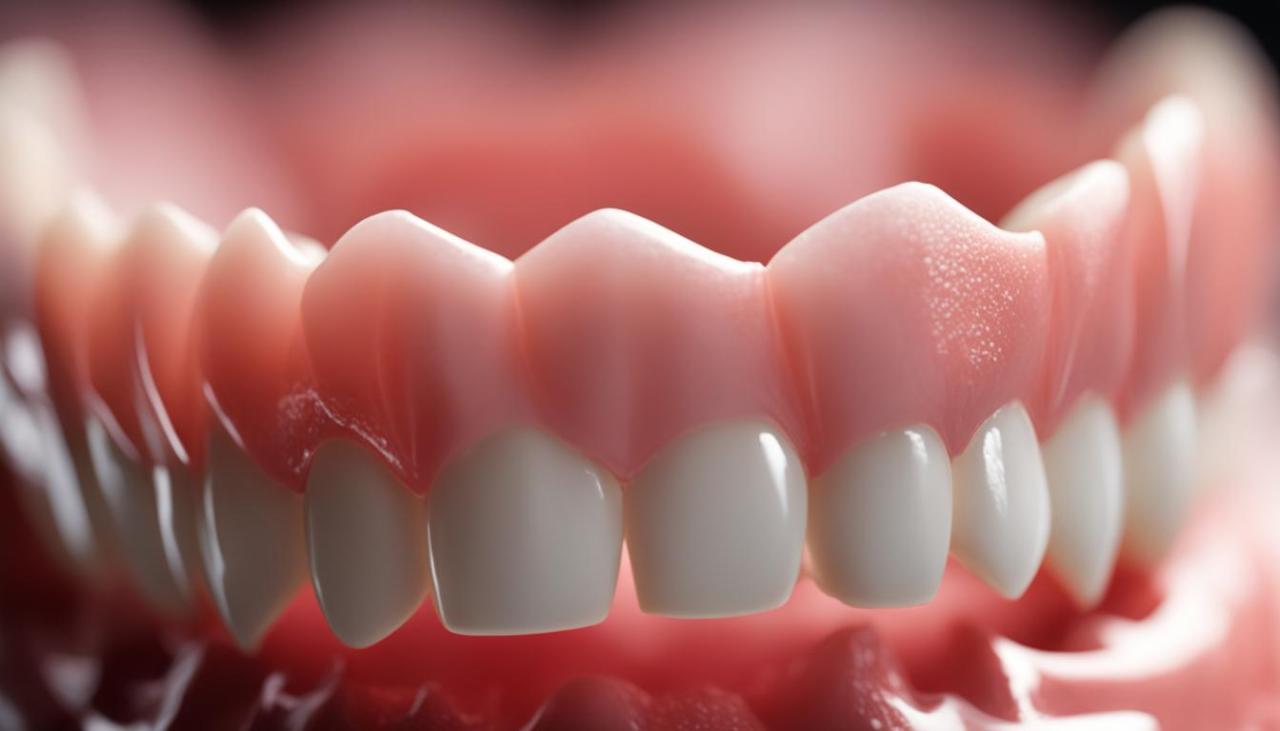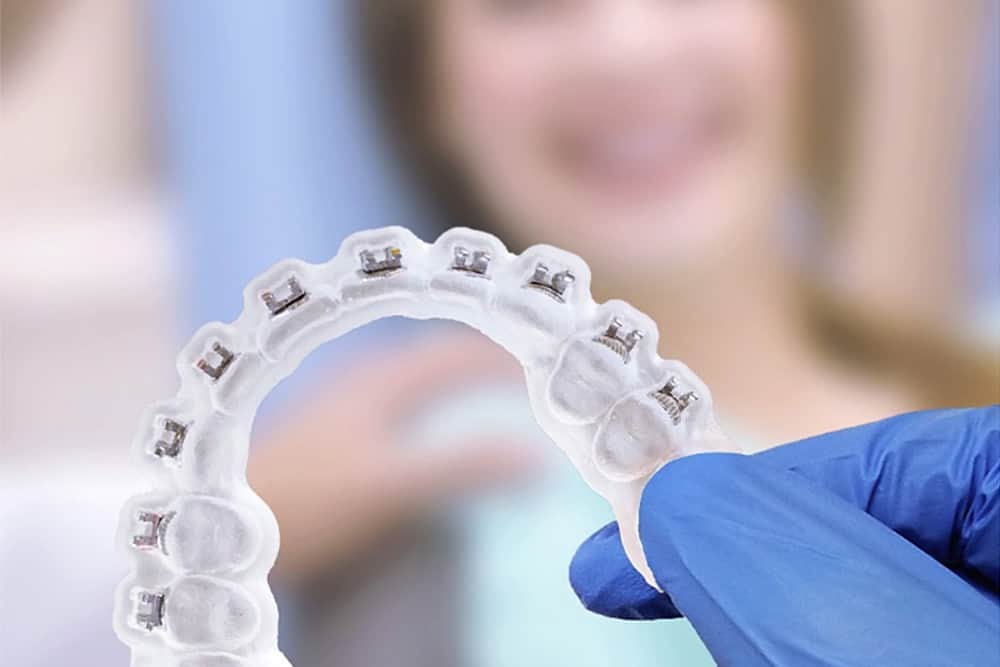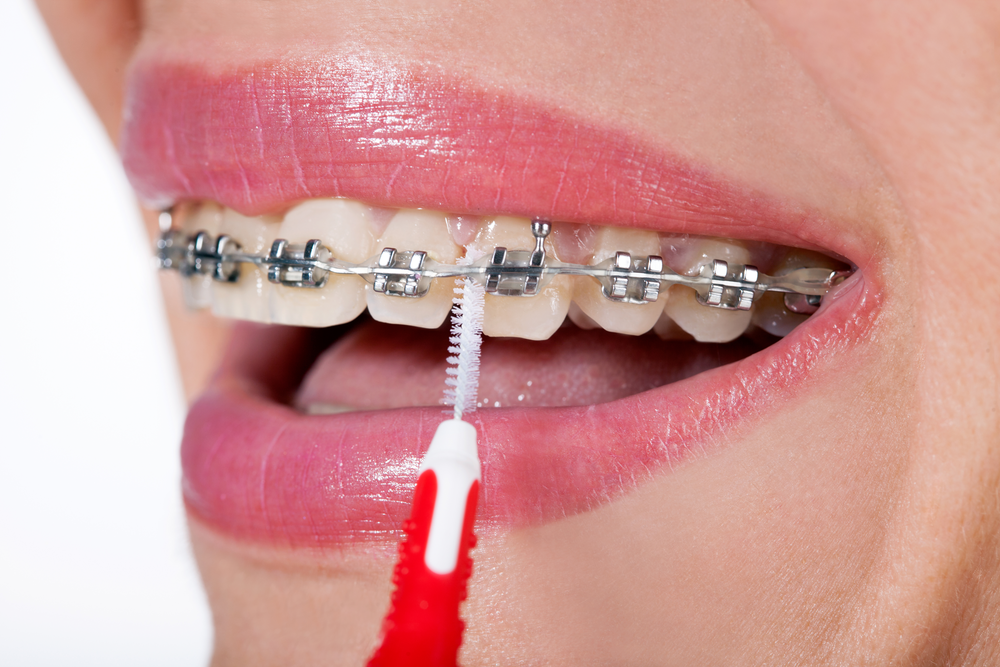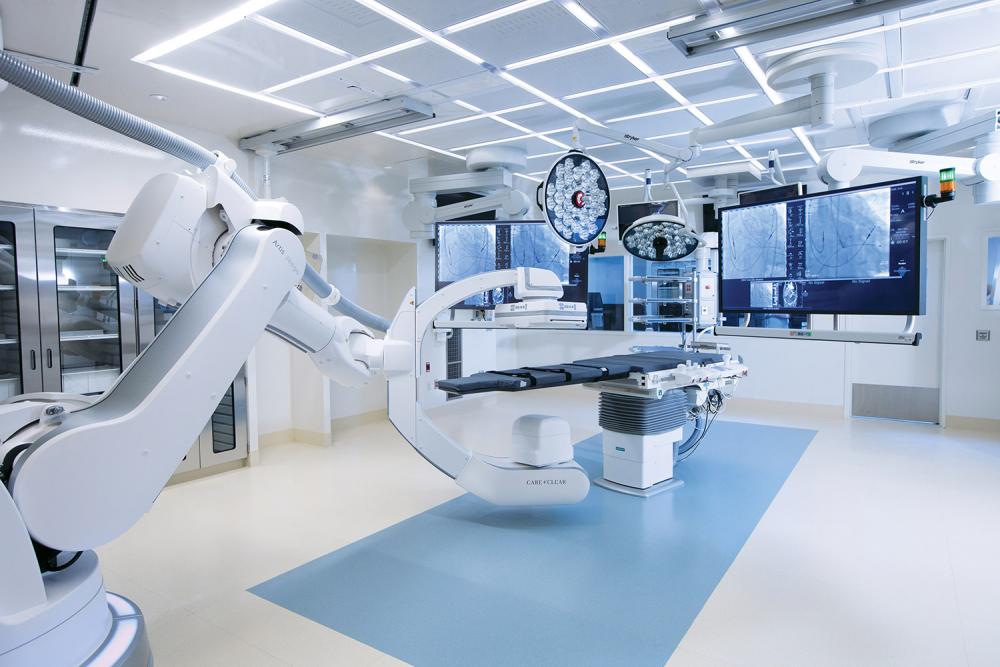New Technology Dental Braces: A Revolution in Orthodontics
New technology dental braces have revolutionized orthodontic treatment, offering patients a wider range of options and more comfortable experiences than ever before. Gone are the days of bulky metal braces […]
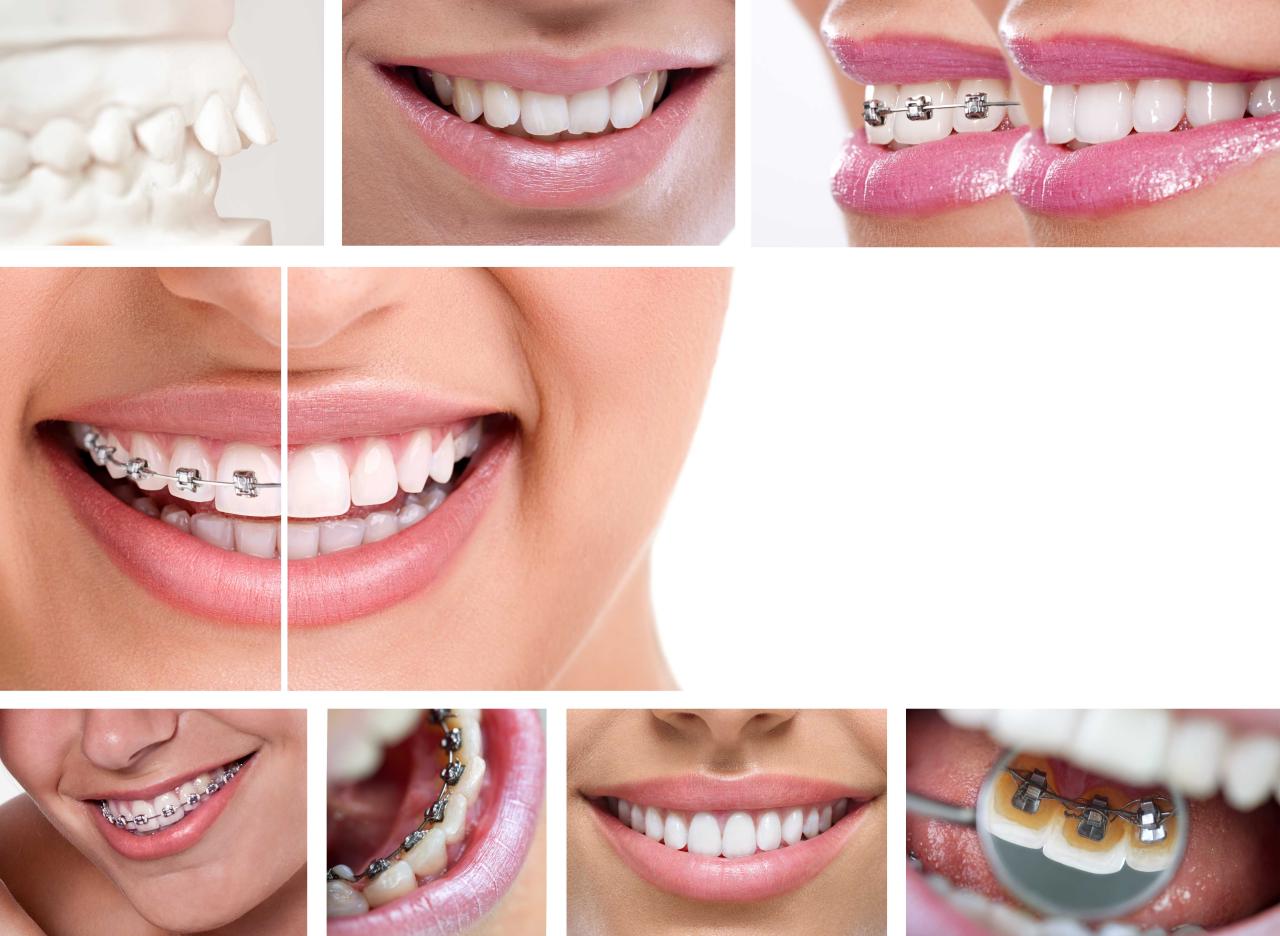
New technology dental braces have revolutionized orthodontic treatment, offering patients a wider range of options and more comfortable experiences than ever before. Gone are the days of bulky metal braces that could be uncomfortable and aesthetically unappealing. Modern advancements have led to the development of innovative braces that are discreet, efficient, and tailored to individual needs.
These new technologies have not only improved the aesthetics of braces but have also significantly reduced treatment times, enhanced comfort, and improved oral hygiene. From self-ligating braces to clear aligners and even smart braces with integrated sensors, the field of orthodontics is constantly evolving, providing patients with more personalized and effective solutions.
Introduction to New Technology Dental Braces
For decades, traditional metal braces have been the gold standard for orthodontic treatment. However, advancements in technology have paved the way for a new era of braces, offering patients a more comfortable, efficient, and aesthetically pleasing experience. These innovative braces leverage cutting-edge materials, digital planning, and personalized treatment approaches, revolutionizing the way we straighten teeth.
This evolution has brought about a range of benefits, including improved comfort, shorter treatment times, and enhanced aesthetics. However, alongside these advantages, new challenges have emerged, such as increased cost and potential technical complexities.
Benefits of New Technology Braces
The benefits of new technology braces are numerous, offering patients a more comfortable and efficient orthodontic experience.
- Enhanced Comfort: New technology braces are often made with materials that are more comfortable and less abrasive than traditional metal braces. For example, ceramic braces are tooth-colored, making them less noticeable and less likely to irritate the gums. Additionally, some braces are self-ligating, meaning they do not require the use of rubber bands or elastic ties, which can cause discomfort and food trapping.
- Shorter Treatment Times: Advancements in materials and techniques have enabled faster tooth movement. For example, self-ligating braces can reduce friction, allowing teeth to move more efficiently. This can lead to shorter treatment times, which is a significant advantage for patients who are eager to see results quickly.
- Improved Aesthetics: New technology braces are designed to be less noticeable than traditional braces. Ceramic braces, for example, are tooth-colored and blend seamlessly with the natural teeth. Clear aligners are another popular option, offering a virtually invisible way to straighten teeth.
- Personalized Treatment Plans: Digital technology allows orthodontists to create personalized treatment plans based on each patient’s unique needs and goals. This ensures that treatment is tailored to the individual, maximizing the effectiveness and efficiency of the process.
Challenges of New Technology Braces
While new technology braces offer numerous benefits, they also present some challenges that patients and orthodontists need to consider.
- Increased Cost: New technology braces are often more expensive than traditional metal braces due to the advanced materials and techniques involved. This can be a barrier for some patients, particularly those who are on a tight budget.
- Technical Complexities: Some new technology braces require more complex maintenance and care than traditional braces. For example, clear aligners need to be removed for eating and cleaning, and they can be more susceptible to breakage or damage.
- Limited Availability: Not all orthodontists have access to the latest technology and training. This can limit the availability of new technology braces in certain areas.
Examples of New Technology Braces
New technology braces have revolutionized orthodontic treatment, offering patients a wider range of options to choose from. Here are some examples:
- Self-Ligating Braces: These braces use a clip or a spring to hold the wire in place, eliminating the need for rubber bands or elastic ties. This reduces friction, allowing teeth to move more efficiently and potentially leading to shorter treatment times.
- Ceramic Braces: These braces are made from tooth-colored ceramic material, making them less noticeable than traditional metal braces. They are also less abrasive on the gums, making them more comfortable to wear.
- Clear Aligners: These are removable, transparent aligners that are made from a clear plastic material. They are virtually invisible when worn, making them a popular choice for adults and teenagers who want to straighten their teeth discreetly.
- Lingual Braces: These braces are placed on the back of the teeth, making them completely invisible. They are more complex to place and adjust than traditional braces, but they offer a discreet alternative for patients who are concerned about the appearance of their braces.
Types of New Technology Dental Braces
The advancement in dental technology has brought about a range of innovative braces, offering patients greater comfort, aesthetics, and efficiency. These new technologies have revolutionized orthodontic treatment, providing more personalized and effective solutions for achieving a perfect smile.
Self-Ligating Braces
Self-ligating braces are a type of bracket that uses a built-in mechanism to hold the archwire in place, eliminating the need for traditional elastic ligatures. This unique design offers several advantages.
- Reduced Friction: The absence of ligatures reduces friction between the archwire and the bracket, allowing for smoother tooth movement and potentially shorter treatment times.
- Enhanced Comfort: The absence of ligatures eliminates the discomfort associated with traditional braces, making them more comfortable to wear.
- Improved Aesthetics: Self-ligating braces are often smaller and less noticeable than traditional braces, improving their aesthetics.
Self-ligating braces are available in both metal and ceramic options, offering patients a choice based on their preferences and budget.
Clear Aligners (e.g., Invisalign)
Clear aligners are removable, custom-made aligners made from a transparent thermoplastic material. They are designed to gradually shift teeth into their desired positions.
- Discreet Appearance: The transparent nature of aligners makes them nearly invisible, offering a highly aesthetic treatment option.
- Removable Design: Clear aligners can be removed for eating, brushing, and flossing, making them convenient and easy to maintain oral hygiene.
- Predictable Treatment: Treatment with clear aligners is highly predictable, as patients can visualize the expected results using a 3D simulation before starting treatment.
However, clear aligners may not be suitable for all cases, especially those involving complex tooth movements or severe crowding.
Lingual Braces
Lingual braces are placed on the back surface of the teeth, making them completely invisible from the front. This feature makes them an ideal choice for patients who prioritize aesthetics.
- Invisible Treatment: The placement of lingual braces on the back of the teeth ensures complete invisibility, making them a highly discreet option.
- Customizable Design: Lingual braces are custom-made to fit the contours of the teeth, ensuring a comfortable and precise fit.
However, lingual braces can be more expensive and require a higher level of expertise to place and adjust. They can also take longer to adjust to, as they can affect speech and require more time to get used to.
Ceramic Braces
Ceramic braces are made from tooth-colored materials, offering a more aesthetic alternative to traditional metal braces.
- Blending with Teeth: The tooth-colored material of ceramic braces makes them less noticeable than metal braces, improving their aesthetics.
- Durable Construction: Ceramic braces are made from strong materials, making them durable and resistant to staining.
However, ceramic braces are more prone to chipping and breakage, especially with habits like chewing on hard objects. They can also be more expensive than metal braces.
Benefits of New Technology Braces
New technology braces offer a plethora of advantages over traditional braces, making orthodontic treatment more efficient, comfortable, and aesthetically pleasing. These advancements significantly improve the overall experience for patients, leading to faster treatment times, enhanced comfort, and improved oral hygiene.
Comparison of Benefits
The table below highlights the key benefits of new technology braces compared to traditional braces:
| Feature | Traditional Braces | New Technology Braces |
|—|—|—|
| Treatment Time | Typically longer, ranging from 18 to 30 months. | Significantly shorter, often completed in 12 to 18 months. |
| Comfort and Aesthetics | Can be uncomfortable, with metal brackets and wires that can irritate the mouth and affect appearance. | More comfortable, with smaller, smoother brackets and wires that are less noticeable. |
| Oral Hygiene | Can be challenging to maintain good oral hygiene due to the presence of brackets and wires. | Easier to maintain good oral hygiene, with self-ligating brackets that allow for easier brushing and flossing. |
| Patient Compliance | May require more frequent adjustments and may be prone to breakage. | Less frequent adjustments needed, with brackets that are less prone to breakage. |
| Risk of Complications | Higher risk of gum irritation, tooth enamel damage, and other complications. | Lower risk of complications, with more advanced materials and techniques. |
Benefits of Specific Types of New Technology Braces, New technology dental braces
The following table showcases the benefits of specific types of new technology braces:
| Type of Braces | Benefits |
|—|—|
| Self-ligating Braces | Faster treatment time, improved comfort, and easier oral hygiene. |
| Lingual Braces | Invisible braces placed behind the teeth, ideal for patients concerned about aesthetics. |
| Clear Aligners | Removable and virtually invisible, providing greater comfort and flexibility. |
The Process of Getting New Technology Braces
Getting new technology braces involves a series of steps that ensure a personalized and effective treatment plan. The process is designed to address your individual needs and optimize the results of your orthodontic treatment.
Diagnostic Scans and Impressions
Before the treatment process begins, a comprehensive assessment of your teeth and bite is crucial. This involves taking digital scans and impressions of your teeth, providing a detailed 3D model of your mouth. This information helps the orthodontist to create a customized treatment plan that addresses your specific needs.
Treatment Planning and Customization
The information gathered from the diagnostic scans and impressions is used to create a personalized treatment plan. This plan includes the type of braces that will be used, the duration of the treatment, and the expected outcomes. The orthodontist will discuss the treatment plan with you, explaining the different options and answering any questions you may have.
Brace Placement and Adjustments
The actual placement of the braces is a relatively quick procedure. The orthodontist carefully positions the brackets on your teeth, attaching them with a special bonding material. The wires are then threaded through the brackets, applying gentle pressure to move your teeth into their desired positions. Adjustments are made regularly, typically every 4-6 weeks, to monitor progress and ensure that the teeth are moving as planned.
Maintenance and Hygiene
Maintaining good oral hygiene is essential throughout the treatment process. This includes brushing your teeth at least twice a day, flossing daily, and using a fluoride mouthwash. You will also need to schedule regular appointments with your orthodontist for adjustments and checkups.
Considerations for Choosing New Technology Braces
Choosing the right type of braces is crucial for achieving successful orthodontic treatment. With the advent of new technologies, patients have a wider range of options to consider, each with its own set of advantages and disadvantages. This section will delve into the factors that influence the choice of braces, providing a comprehensive guide for patients seeking the best solution for their individual needs.
Factors Influencing the Choice of Braces
The selection of braces is a personalized decision influenced by several factors, including the severity of the malocclusion, the patient’s age and lifestyle, and the cost and insurance coverage.
- Severity of Malocclusion: The extent of misalignment in teeth significantly impacts the type of braces recommended. For minor misalignments, clear aligners might be sufficient, while more complex cases may require traditional braces or self-ligating brackets.
- Patient Age and Lifestyle: Age and lifestyle play a significant role in brace selection. Children and adolescents may prefer colorful or fun braces, while adults might opt for discreet options like lingual braces or clear aligners. Active individuals may find traditional braces more durable and less prone to breakage than clear aligners.
- Cost and Insurance Coverage: The cost of braces varies depending on the type and complexity of treatment. Traditional braces are typically the most affordable, while newer technologies like lingual braces and self-ligating brackets tend to be more expensive. Insurance coverage can significantly impact the overall cost of treatment, so it’s crucial to consult with your insurance provider to understand your benefits.
Suitability of Braces for Different Orthodontic Conditions
Different types of braces are better suited for specific orthodontic conditions.
- Traditional Braces: Traditional braces are effective for a wide range of malocclusions, including overbites, underbites, crossbites, and crowding. They are highly durable and can withstand significant force, making them suitable for complex cases.
- Self-Ligating Braces: These braces are known for their efficiency and comfort. They are ideal for patients with mild to moderate malocclusions and can shorten treatment time compared to traditional braces.
- Lingual Braces: Lingual braces are placed behind the teeth, making them invisible to others. They are suitable for patients who prioritize aesthetics and are willing to adapt to the slightly increased discomfort associated with their placement.
- Clear Aligners: Clear aligners are removable and nearly invisible, making them a popular choice for adults and teenagers. They are best suited for mild to moderate malocclusions and may not be effective for complex cases requiring significant tooth movement.
Decision-Making Process Flowchart
A flowchart can guide patients through the decision-making process for choosing the right braces.
Step 1: Consult with an Orthodontist
- Discuss your orthodontic concerns and goals.
- Get a comprehensive evaluation and diagnosis of your malocclusion.
Step 2: Explore Treatment Options
- Discuss the different types of braces and their suitability for your condition.
- Obtain information on the pros and cons of each option.
Step 3: Consider Your Lifestyle and Preferences
- Evaluate your comfort level with different brace types.
- Consider your age, activity level, and aesthetic preferences.
Step 4: Discuss Cost and Insurance Coverage
- Obtain a detailed cost breakdown for each treatment option.
- Verify your insurance coverage and any out-of-pocket expenses.
Step 5: Make an Informed Decision
- Choose the brace type that best aligns with your needs, budget, and lifestyle.
- Discuss any concerns or questions you have with your orthodontist.
Final Conclusion: New Technology Dental Braces

The future of new technology dental braces is promising, with ongoing research and development pushing the boundaries of innovation. As technology continues to advance, we can expect even more personalized, efficient, and comfortable treatment options that will transform the way we approach orthodontic care. This exciting evolution will not only benefit patients but also contribute to the advancement of the dental industry as a whole.
New technology dental braces are revolutionizing the way we approach orthodontic treatment. These innovative solutions offer faster treatment times, increased comfort, and improved aesthetics. Companies like grasten technologies are at the forefront of this revolution, developing cutting-edge braces that leverage advanced materials and digital technology.
The future of orthodontics is bright, with these advancements promising to make straighter smiles more accessible and enjoyable than ever before.

